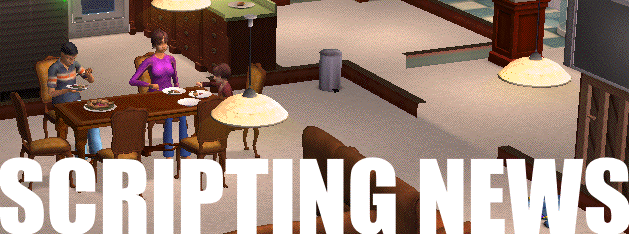
 New feature: Blog post sub-text!
New feature: Blog post sub-text! 
Note: If you're reading this on the Home page or the RSS feed you won't see the plus signs. Go to the story page to get the full effect. ![]() ">
">
Did you see the final episode of LOST? I did. I'd love to write about it, and I will -- but be forewarned, if you click on the little plus sign next to this paragraph, there are spoilers below.
 There's nothing that says a paragraph has to have sub-text. In fact you can use it to simply annotate, sub-texting items most readers wouldn't care about, but that you should include to be complete. An Internet-age footnote.
There's nothing that says a paragraph has to have sub-text. In fact you can use it to simply annotate, sub-texting items most readers wouldn't care about, but that you should include to be complete. An Internet-age footnote.
This is what the editor looks like.
I was inspired by a feature that Rich Ziade added to Readability. I thought of doing this while listening to him talk last night at our Thursday night meetup at NYU.
It's also related to a Nick Carr post that got a lot of play recently, where he said it was time to get links out of our way. He may have a point. In age where people skim, maybe you want to tuck away the details to let people get the main point quickly, but still provide all the background and off-site links that a careful reader may want.
Now for a little humor.
Two Jewish guys walk past a Catholic church.
Ponzi calls this The RSS Couch.
What will I really do with this feature?
BTW this is not the first post to use the feature.
 Notes from last night's meetup
Notes from last night's meetup 
 Last night was one of the most interesting Thursday night meetups we've had at NYU, even though a lot of our regulars stayed home,. There was a huge afternoon rainstorm that probably accounted for some of the sparseness. It was a shame because the discussion around the Scripting2 software and Readability got very interesting.
Last night was one of the most interesting Thursday night meetups we've had at NYU, even though a lot of our regulars stayed home,. There was a huge afternoon rainstorm that probably accounted for some of the sparseness. It was a shame because the discussion around the Scripting2 software and Readability got very interesting.
First, I did a thorough review of the reader interface of the new Scripting News. I'll provide details and links as this piece develops through the day. I briefly showed the editorial tools, but after the demo of the UI, there wasn't so much interest.
Then our guest, Richard Ziade, took the floor and told the story of Readability and showed us some iPad apps for reading content. He gave us background on what Safari is doing that goes beyond what today's Readability does.
Our newest regular, Megan Taylor, asked why there is a cone of silence around the Thursday meetups. I said there is no prohibition on writing about the meetings. I wasn't doing it because I like the way it's going as a small thing, and want to get it better established before making it large. Sometimes these things get big before they get a chance to decide what they are. Good example is the Hacks/Hackers meetup last week. When 250 people show up to a first meeting it can't be anything but a mixer. I much prefer the way the Thursday night meetups have evolved. We add people slowly, looking for those who have time for the kinds of projects we do (as yet to be determined) and who are smart and creative and ambitious. I'm not looking for a pitch line, like the one Fred Wilson describes. That he has to deal with that, so regularly, is bad for Fred and for those who want him to be at his creative best.
So I'm going to try to write more about what we do at the Thursday meetups. I know this will get more people to want to come, but I'm going to be a hardass about the slow-growth rule that has so far served us well. It's an invite-only affair, not open to all. But what we learn can and probably should be shared, as it happens. So I'll strive to do that more and encourage others to do the same.
One more note, it's a bit different from the Berkman Thursday series we started in 2003, which believe it or not, is still going on. There, our mission was to get people blogging. So by its nature there was a lot of publicity for our meetings. And it was safer because: 1. The blogging world of 2003 was much smaller than it is today. 2. The NY metro area is huge compared to Boston. If we really beat the drum, eventually we'd need a large auditorium to hold our crowd. Right now it feels much better as a small thing.



